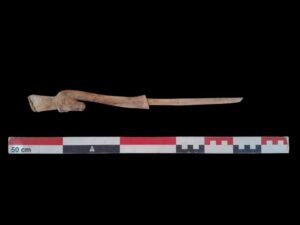A 35-year-old Filipina cashier had long felt something was wrong with her right eye but she thought it was nothing serious — until the most basic tasks became too difficult.
“For three to four months, simple things like reading prices and interacting with customers became a struggle,” Angellica Batallones said.
When she noticed that she could no longer see beyond one metre, she decided to seek medical help.
“Despite visiting multiple centres in Ajman, I was told my condition was too serious to be treated here, and I was advised to go back to the Philippines.
Finally, Batallones visited a hospital where she was diagnosed with ‘retinal detachment’ and doctors found that a hole or a small tear in her retina could be causing her condition.
The medical team recommended ‘scleral buckling’ which is a type of eye surgery to repair a detached retina, combined with laser treatment to address the issue.
“When I visited Thumbay Hospital Ajman, a doctor there quickly diagnosed what was wrong with my eyes and provided clear answers.
“He immediately scheduled the procedure to save my eyes from further deterioration. His prompt action was crucial; otherwise, my condition could have led to complete vision loss,” Batallones added.
What is retinal detachment?
Retinal detachment typically occurs when the retina, the light-sensitive tissue lining the back of the eye, pulls away from its normal position. This can typically happen due to age-related changes, eye trauma or injury, family history, eye surgeries or procedures, or severe nearsightedness, among other reasons.
Batallones’ attending doctor explained the gradual onset of retinal detachment started with blurred vision and progressed to only being able to see up to one metre.
“The duration of nearly four months since the detachment began allowed for atrophic changes (end stage of a process resulting in optic nerve damage) in the retina, where the cells started degenerating. This compromised the retina’s structure and function, complicating the surgical approach and increasing the risk of the retina detaching again,” said Dr Kapil Das, ophthalmologist at Thumbay Hospital Ajman.
He explained the surgery performed was a non-drainage scleral buckle procedure, where the surgeon fixes a retinal detachment without draining the fluid under the retina. This is different from the usual method where the fluid is typically drained.
“Draining the fluid is generally done to flatten the retina and facilitate reattachment. However, in this case, the decision was made to avoid draining the fluid, which can sometimes lead to additional complications such as hypotony (low intraocular pressure) or choroidal detachment,” said Das.
“The laser treatment further secures the retina by creating adhesions around the tear, ensuring its stability and minimizing the risk of future detachment.”
Back to normal
After the surgery, Batallones’ retina settled well. She has regained her vision and, now, she can read comfortably.
“The recovery was painful, and I was nervous about whether my eyes would return to normal. It’s been almost two weeks and my eyes have improved significantly. Before, I could barely see people or objects even at a short distance, but there’s been a remarkable improvement, and now I can see everything clearly,” she said.
Dr Das, however, emphasised that early medical intervention can greatly influence the result of such surgeries.
“If one experiences sudden or even gradual loss of vision, especially with symptoms like flashes of light or floaters, please seek immediate medical attention. Prompt treatment can significantly improve outcomes and thereby prevent severe vision loss,” he said.


















+ There are no comments
Add yours